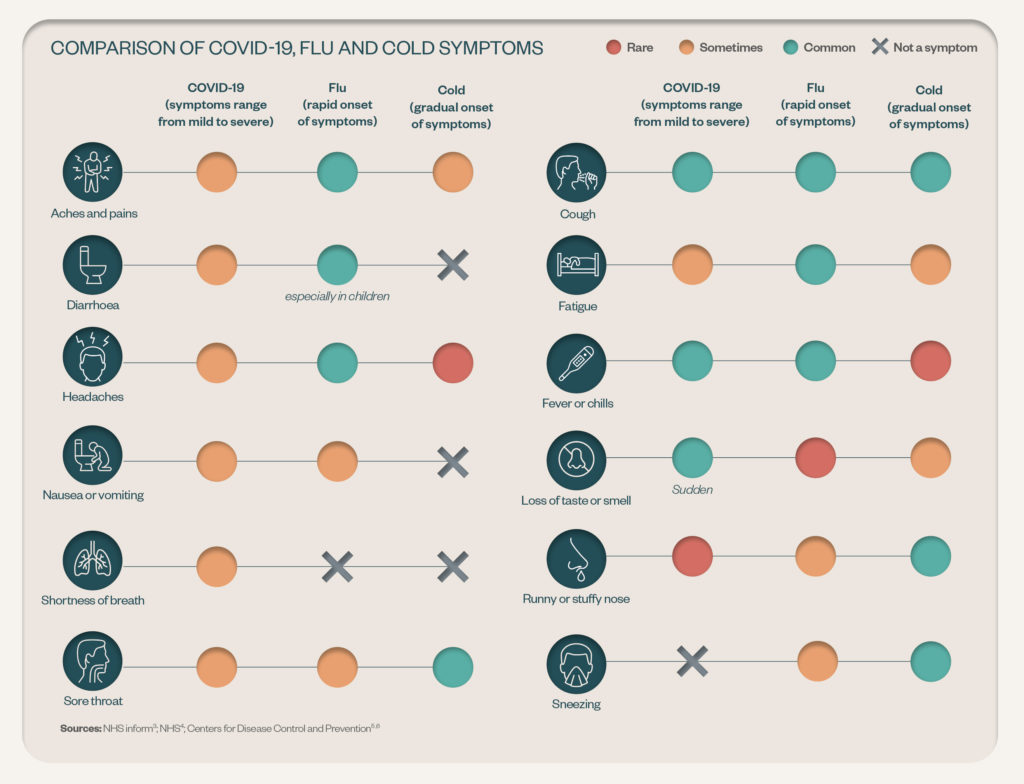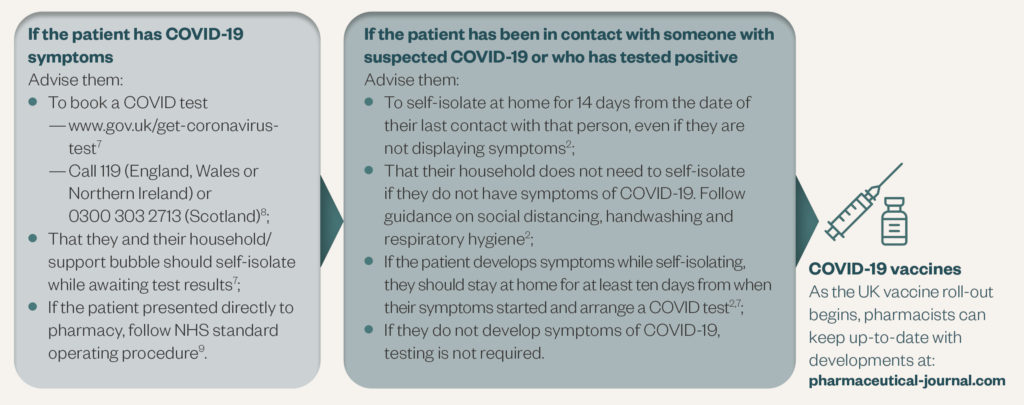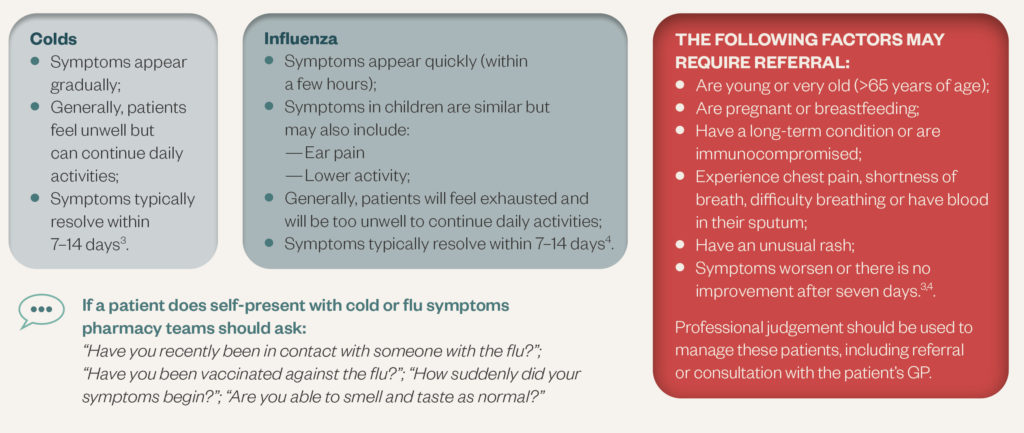
The guidance and advice on COVID-19 contained within this article was correct at the time of publication. Guidance has now been updated and there are currently no restrictions in place in the UK. For more information, see: https://www.gov.uk/coronavirus
Cold and flu share some symptoms and, if managed effectively, are often self-limiting and resolve within a couple of weeks in people without pre-existing conditions. However, during winter months, and given the potential overlap in symptoms with COVID-19, patients may be concerned about the cause.
This resource (click here to download the PDF) highlights the main differences between the symptoms of colds, flu and COVID-19 to enable pharmacy teams to appropriately advise, treat or refer patients.
Pharmacy consultations
Step 1: Rule out possible COVID-19 infection


Sources: [1–6]
Step 2: COVID-19 suspected

Sources: [2,7–10]
Step 3: Other viral infection suspected
If COVID-19 is ruled out, it is important to consider whether the patient has a cold or flu, then to ensure they do not have symptoms that would warrant further investigation before recommending treatment.

Sources: [3,4]
Step 4: Recommend options for effective symptom management

Sources: [3,4]
Step 5: Close the consultation

Pharmacy has been pivotal to the COVID-19 pandemic response and will ensure patients are appropriately managed when they present with a viral infection this winter. Ensuring the entire team are confident about the advice they provide to patients will help ensure best patient outcomes.
Promotion: PM-UK-NRS-20-00095
- 1NHS. Coronavirus (COVID-19) symptoms. NHS. 2020.https://www.nhs.uk/conditions/coronavirus-covid-19/symptoms/ (accessed Dec 2020).
- 2NHS England. Guidance for contacts of people with confirmed coronavirus (COVID-19) infection who do not live with the person. NHS England. 2020.https://www.gov.uk/government/publications/guidance-for-contacts-of-people-with-possible-or-confirmed-coronavirus-covid-19-infection-who-do-not-live-with-the-person/guidance-for-contacts-of-people-with-possible-or-confirmed-coronavirus-covid-19-infection-who-donot- live-with-the-person#:~:text=It%20is%20very%20important%20that,COVID%2D19 (accessed Dec 2020).
- 3NHS Inform. NHS Inform. Common cold. 2020.https://www.nhsinform.scot/illnesses-and-conditions/infections-and-poisoning/common-cold (accessed Dec 2020).
- 4NHS. Flu. NHS. 2019.https://www.nhs.uk/conditions/flu/ (accessed Dec 2020).
- 5Centers for Disease Control and Prevention. Symptoms of coronavirus. Centers for Disease Control and Prevention. 2020.https://www.cdc.gov/coronavirus/2019-ncov/symptoms-testing/symptoms.html (accessed Dec 2020).
- 6Centers for Disease Control and Prevention. Cold versus flu. Centers for Disease Control and Prevention. 2020.https://www.cdc.gov/flu/symptoms/coldflu.htm (accessed Dec 2020).
- 7UK Government. Get a free NHS test today to check if you have coronavirus. UK Government. 2020.https://www.gov.uk/get-coronavirus-test (accessed Dec 2020).
- 8NHS. Your coronavirus test result. NHS. 2020.https://www.nhs.uk/conditions/coronavirus-covid-19/testing-and-tracing/what-your-test-result-means/ (accessed Dec 2020).
- 9NHS England and NHS Improvement. Novel Coronavirus (COVID19) standard operating procedure. NHS England and NHS Improvement. 2020.https://www.england.nhs.uk/coronavirus/wp-content/uploads/sites/52/2020/03/Novel-coronavirus-COVID-19-standard-operating-procedure-Community-Pharmacy-v2-published-22-March-2020.pdf (accessed Dec 2020).
- 10The Pharmaceutical Journal. Special report: COVID-19. The Pharmaceutical Journal. 2021.https://pharmaceutical-journal.com/covid-19 (accessed Jan 2021).
You might also be interested in…

Draft invitations and leaflets on medication reviews launched for patients in care homes

Antipsychotic prescribing in dementia does not follow NICE guidance, study shows

